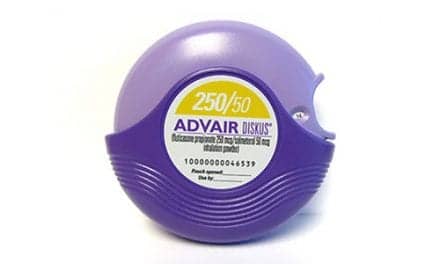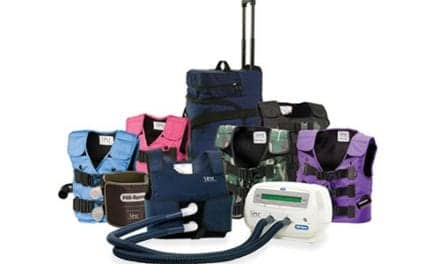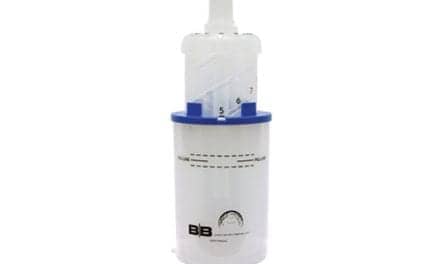A projected 54.3 million Americans will travel at least 50 miles from home this Thanksgiving, making it the busiest Thanksgiving weekend (in terms of travel volume) since 2005, according to AAA.[1] Next month, over 100 million Americans will travel the same distance between December 23 and January 1. In all, an estimated 13 million American will travel by air for either the Thanksgiving or Christmas holidays. Traveling for the holidays is stressful enough but for travelers with supplemental oxygen devices or CPAP machines, the venture can take on added anxiety and hassle.
The following are industry recommendations for travelers wanting to bring their CPAP machines and oxygen therapy equipment.
1. Do You Need Supplemental Oxygen?
In flight, reduced air pressures in aircraft cabins cut the amount of breathable air (including oxygen) by about 6%, which can lead to chest pains, shortness of breath, and other hypoxia-related conditions in some chronic lung patients.[2] Patients already prescribed oxygen therapy (or CPAP) are aware of their device needs, but what about patients who are unsure if they need supplemental O2? Before traveling, patients with concerns about their oxygen levels could schedule a high altitude simulation test (HAST). The HAST is a noninvasive and inexpensive test that offers a more scientific approach to determine a patient’s oxygen needs, because everything else is just a guess.
More info on the HAST is available here.
2. Know the FAA Regulations
The Federal Aviation Agency allows approved CPAP machines and portable oxygen concentrators on commercial airlines. According to the FAA, CPAPs, BiPAPs and APAPs are allowed in carry-on bags but must be removed from the carrying case and undergo X-ray screening. Face masks and tubing may remain in the case.
However, compressed oxygen (or liquid oxygen) to be used in the aircraft cabin must be provided by the airline (not carried-on by the patient), so it’s necessary to arrange it in advance. Notably, airlines are not required to provide oxygen service, according to the TSA, so it’s important to contact the airline prior to booking your travel.
3. But Also Know Your Equipment
Not all CPAP devices and portable oxygen concentrators are cleared by the FAA for airline travel. If approved, CPAP devices should include documentation. Some examples of devices approved by the FAA are the ResMed AirMini, Philips Dreamstation Go, Apex Medical XT, Transcend II, and the Z1 travel CPAP.
According to United Airlines, their flights allow some of the following POC devices on board: the AirSep Freestyle 5, DeVilbiss iGo, Inogen One, Inogen One G2, Inogen One G3, ResMed’s LifeChoice Activox, Invacare Solo2, Precision Medical EasyPulse, Philips Respironics EverGo and SimplyGo, and the SeQual Eclipse, among others. Patients should always confirm their specific device is not only approved by the FAA, but their chosen airline as well.
4. Bring Your Prescription
Experts recommend bringing a signed copy of your prescription from your physician to expedite security screening. While this seems like it’s simply a case of “better safe than sorry,” there is no telling if the agents screening your baggage will have previous experience with your particular device. The prescription, in combination with an airline-provided medical equipment tag, should guarantee an expedient TSA screening.
5. Charge Those Batteries
While most POCs and travel CPAP machines have battery options, not all may be equipped to last the entire duration of a flight. Certainly for travelers on long-haul flights, fully charging their devices and batteries (and replacement batteries before flying is a must.
Some airlines may have in-seat power options for use with power cords, but these are not standard on most airlines. Futhermore, the rise of “no-frills” airfares mean these in-seat power options are far from guaranteed. A quick call to the airline in advance could help travelers arrange seating near a power outlet.
6. Carry-on
Obviously, patients requiring supplemental oxygen will require their therapy in flight, so it’s necessary to pack your device(s) and accessories in your carry-on bag. While CPAP patients may not need the machine in-flight, the TSA asks travelers to carry on the device and not pack them in checked baggage.
According to the Americans with Disabilities Act, a CPAP machine is not considered carry-on luggage and does not count toward your carry-on quota. A medical equipment tag (and copy of your prescription) can help avoid any hiccups during the screening process. To maintain cleanliness, patients are encouraged to place their devices in clear plastic bags for screening.
7. Check Airport Delays and Arrive Early
Certainly, the average TSA security screening time will vary based on the airport you’re using, but patients traveling with medical devices should expect additional time at the checkpoint (especially for holidays). Travelers can consider the TSA Pre✓ program, which prescreens passengers and can expedite the in-airport screening process.
If TSA Pre✓ is not available and the standard “arrive two hours early” is too imprecise, the TSA offers a mobile application called “MyTSA App” that provides travelers with round-the-clock info on their local airport, including expected wait times, flight delays, and approved/prohibited items for carry-on bags or checked baggage. The app, available on Google Play and the AppStore, can project how busy the airport is likely to be on your specific day and time of travel.
RT











Most airlines typically require enough batteries for 1.5x the flight duration. Also, just because there are power plugs on the planes doesn’t mean they’ll actually work. I was on a flight recently and the outlet wasn’t enough to power our POC so we had to use just the batteries instead. Bottom line is to be prepared.
Thanks for this. I need to fly with a family member and his 5l oxygen concentraor
so I want to be prepared. Should I also talk to the manufacturer of the device?
Definitely contact the manufacturer to confirm the device is FAA approved. If it is you may also want to confirm with your specific airline in advance. Safe travels!